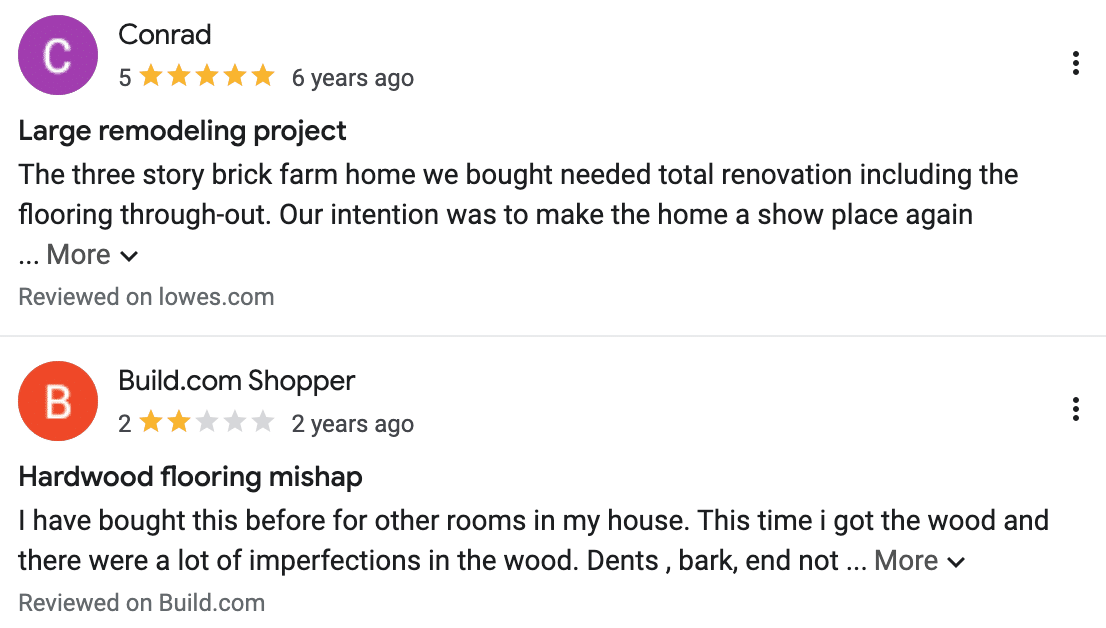In e-commerce, traditional SEO advice was to focus on category pages since these attracted most non-branded traffic.
Like all of SEO though, best practices evolve as Google changes.
To encourage transactions, Google has created their own Product Listing Pages (PLPs) in search results. These have rich, visual product displays arranged in grids or carousels. They allow easy filtering & comparisons.

This affects businesses that care about local store visits too, as customers will view products before purchasing at a brick-and-mortar location.
Like other rich results, we’d expect much higher clickthrough rates compared to plain blue links.

These search result pages enable a result within regular Google search (additional results can also be found by clicking the Shopping tab bubble at the top) called Popular Products (or In stores nearby for local intent) under the Merchant listing experience result type, referring to them as free listings.
They are known within the SEO community as Product Grids (static and usually on desktop) or Product Carousels (scrollable and usually on mobile). These are organic listings, not paid, and typically appear below sponsored results (but not always).

The first step is to make your products eligible in Google Merchant Center (Google for Retail). While this platform only managed paid Google Shopping listings in the past, it now allows these free listings as well.
The definitive product grid SEO guide was written by Brodie Clark, which inspired everything below. Check it out, alongside his blog with other useful e-commerce SEO ideas, for great content on the subject.
Product Grid/Carousel SEO Best Practices
- Mark up individual product pages in the HTML through Products structured data.
Include additional properties for Google Merchant Center like identifiers alongside return & shipping policy links. Keep in mind you must have an Offer attribute, or to be actually selling something, to be eligible.
The Rich Results Test tool from Google will confirm if structured data is working properly.
While product data feeds can be created separately within the Merchant Center if needed, this structured data can automatically create & update feeds instead.
- Google’s Manufacturer Center supports additional properties for even richer listings.
However, this tool is meant for the original product creator/manufacturer and not each retailer. (This Google support doc explains the differences between Merchant Center vs. Manufacturer Center.)
- Fast shipping or deals/discounts enable placements in more specific product grids, beyond the general popular product grids or carousels, so include their structured data properties if possible.
Any differentiator that benefits the user may be highlighted in the future through a new grid type or rich snippet. Coupons & loyalty programs have been spotlighted recently.

You can quickly evaluate performance versus regular pages for search queries. This could help for establish priorities & tests, perhaps leading to more SEO attention on improving product pages versus creating new categories.
- Include review snippets that support on-page reviews on specific products, if possible.
This especially improves your product’s perception. Know too that Google will source product reviews, across all retailer sites, that sell your product.
- Consider seller ratings, which provide an overall rating for your business.
Seller ratings historically were for PPC only but can now be shown alongside organic listings too. To become eligible, you can use Google Customer Reviews or a third-party option like Yotpo.
These reviews, user engagement & rich product information can all help to achieve a Top Quality Store badge.

- Top listings usually contain non-branded keywords related to common search queries in the more important on-page SEO elements (title tag & H1/main headline).

Therefore you may need to modify individual product page titles & headers to rank best, adding more generic keywords.
As mentioned before, this process was usually reserved for category pages, so the shift may require you to revise your overall SEO strategy.

- Ensure keyword-rich, descriptive image filenames & alt text on product pages.
Google may show an image section that will pull from this data, also considered part of the Merchant Listing experience result type (Google Images).

- Even forum results, such as discussions of the product type on Reddit, can be shown.
This is occurring alongside Google’s overall competitive shift to emphasize online discussions.
Brand awareness, at least in your niche, will certainly help, and it’s clear many of these best practices require great products to succeed in the first place!
